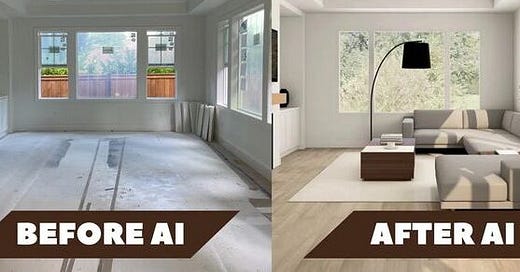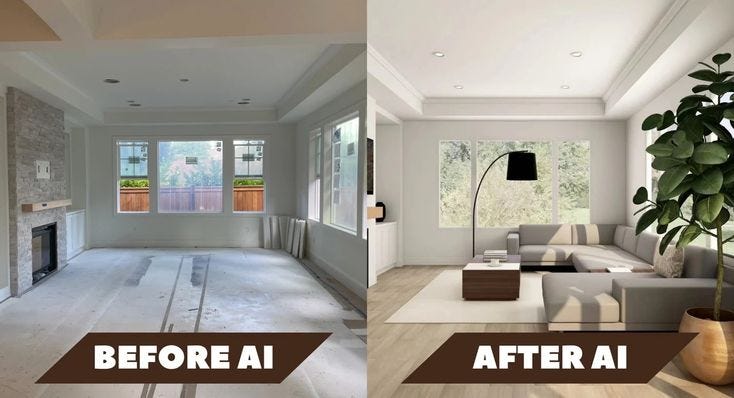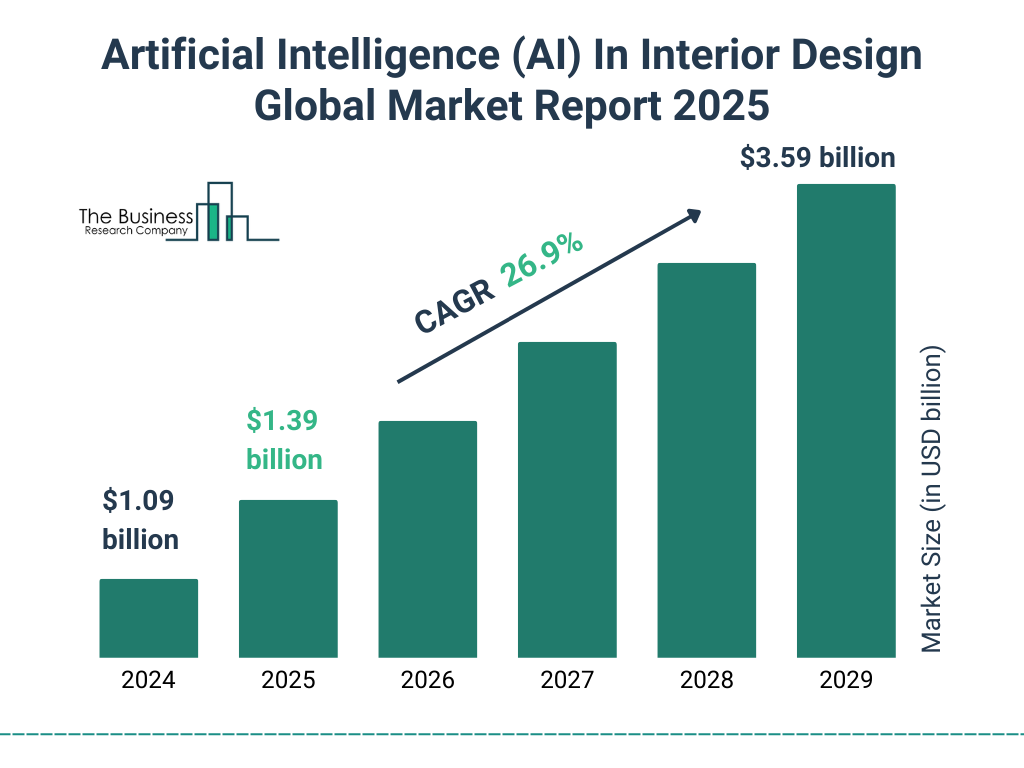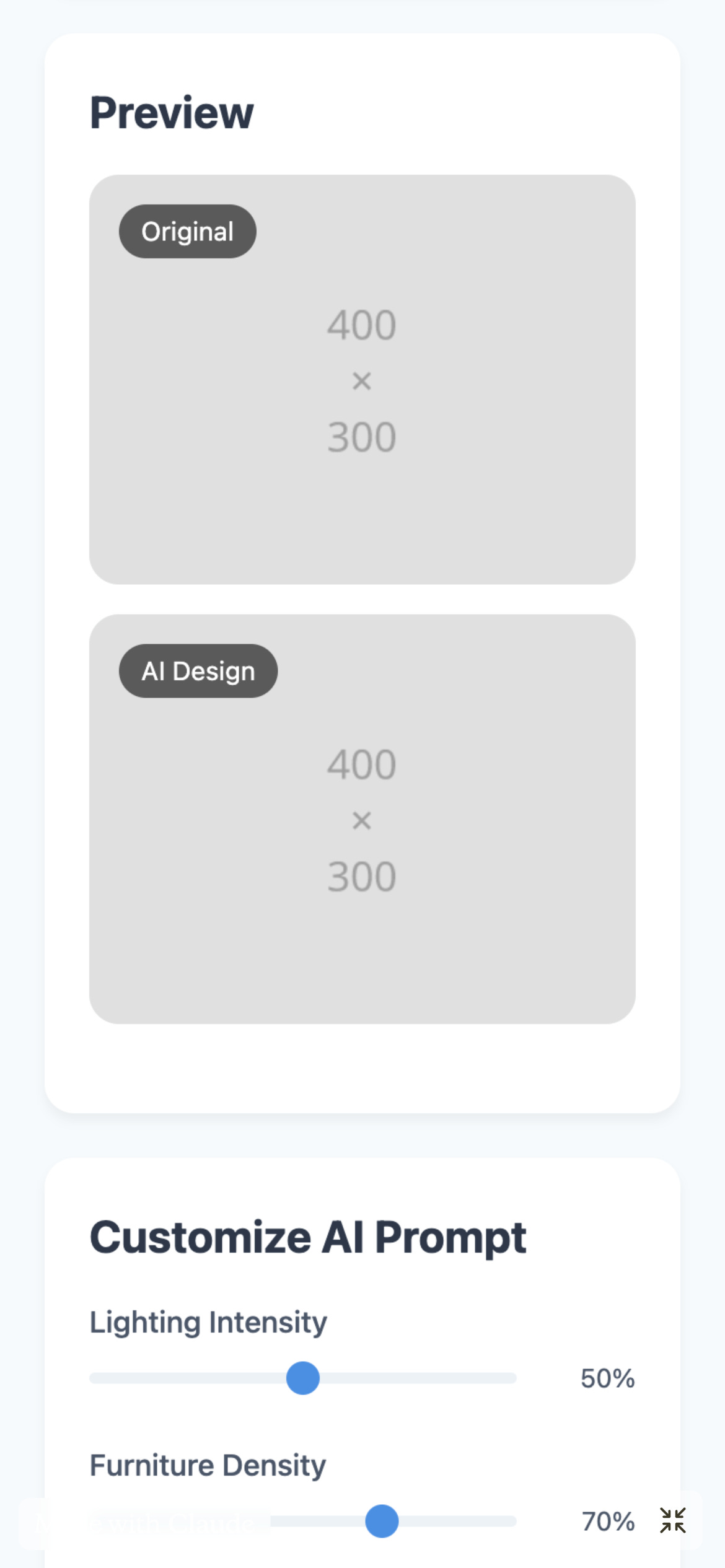Case Study: AI-powered Interior Design #21
Artificial intelligence (AI) is rapidly transforming the interior design industry, impacting how designers work and how clients experience the design process.
Background
AI House Design is a Vietnamese app for designing homes. I'm excited about how it creates design ideas, so I want to learn more about this new area and suggest ways to make it even better.
Market Landscape
Market Size & Growth
The market size will grow from $1.09 billion in 2024 to $3.59 billion in 2029
At a CAGR of 26.9%
Source: Thebusinessresearchcompany
Market Segmentation
By Component: Solution, Services
By Application: Space Planning And Design, Furniture And Decor Selection, Virtual Reality And Augmented Reality (VR Or AR) Visualization, Material Selection And Optimization, Other Applications
By End User: Interior Design Firms, Architects And Real-Estate Developers, Furniture Manufacturers, Other End-Users
Key Players
Autodesk
Houzz
Collov
Homestyler
Planner 5D
REImagine Home
RoomGPT
Interior AI
Space Designer 3D
Coohom
Competitor Analysis
Direct Competitors
Key Learnings
AI-powered automation is the key different
Freemium model works best, but enterprise offerings create higher revenue potential
Multiple tiers covering more user segments lead to increased revenue.
Customization & 3D tools increase engagement
Furniture partnerships could be a new revenue stream
Personas
Persona 1: Tran Minh Hieu
Demographics:
Age: 26
Sex: male
Occupation: Architect
Location: Ho Chi Minh, Vietnam
Bio: Hieu is an architect who frequently works on home renovation projects. He wants quick AI-generated concepts to show clients before spending time on manual design work.
Goals:
Quickly visualize design ideas for different room styles.
Export high-quality renders to show clients before finalizing designs.
Frustrations:
Difficult onboarding flow with too many unnecessary steps.
The app pushes a subscription before he even gets to test the core features properly.
Hard to fine-tune customization options (lighting, size, and furniture )
Quote: “I just need fast, flexible AI-generated designs to show my clients, but the app makes it harder than it should be.”
Persona 2: Vi Chi Thien
Demographics:
Age: 26
Sex: male
Occupation: Engineer
Location: Dong Nai, Vietnam
Bio: Thien recently bought his first apartment and is excited about decorating it. He wants to use AI-powered apps to get professional-looking designs without hiring an expensive interior designer.
Goals:
Get affordable and high-quality design recommendations
See before & after AI transformations of his apartment.
Frustrations:
One-tier pricing model (999K VND/year) is too expensive for casual users like him.
The AI designs don’t always match his room’s actual layout and lighting.
Quote: “I want to design my apartment myself, but the app feels like it’s pushing me to buy a subscription without proving its value.”
Persona 3: Nguyen Thi Thanh Dan
Demographics:
Age: 35
Sex: female
Occupation: Freelance Writer
Location: Dong Nai, Vietnam
Bio: Dan recently bought a house and is passionate about home decoration. She frequently looks for design inspiration online and wants to experiment with different styles before making furniture purchases.
Goals:
Experiment with different styles before deciding.
Attach real furniture & decor from brands
Frustrations:
Hard to fine-tune AI-generated styles, she wants more control over room characteristics.
The app forces her to subscribe early, but she doesn’t feel the value yet.
No direct option to buy furniture she sees in the AI render.
Quote: “I love testing different design styles, but I wish I had more control over AI suggestions and could shop directly from the app.”
Problem Statement
Users face frustration in onboarding and subscription conversion.
Key pain points
The onboarding flow is too noisy—users feel overwhelmed before seeing value.
Subscription model is one-size-fits-all, which deters casual users from subscribing.
Lack of customization—users struggle to fine-tune AI styles and room characteristics
No integrated furniture shopping—users can’t buy real décor directly from their AI designs.
Recommend Solutions
Solution 1: Tiered Subscription Model
Idea
Transition from 1 tier premium model to 3 tiers subscription to make the app more accessible, flexible, and scalable.
Why?
Increases conversion rates by letting users start free and upgrade gradually.
Captures both casual users & professionals, ensuring higher LTV.
Solution 2: AI Style Recommendations & Personalization
Idea
AI analyzes room characteristics (size, lighting, furniture).
Suggest personalized design styles (Minimalist, Scandinavian, Boho, etc.).
Users can fine-tune AI prompts for better customization.
Why?
Improves user engagement by making AI-generated designs more relevant.
Encourages creativity while allowing customization.
Boosts trial-to-paid conversion by showing real value early
Solution 3: In-App Marketplace for Furniture & Decor
Idea
Partner with furniture brands & e-commerce platforms
Allow users to purchase real furniture directly from AI-generated designs.
Implement affiliate marketing to generate additional revenue.
Why?
Seamless shopping experience for users already designing rooms.
Higher LTV by integrating both design and e-commerce.
Prioritized Solutions
RICE Score = (Reach * Impact * Confidence) / Effort
Reach: Percentage of user growth compared to the current number of users in the first quarter.
Impact: Percentage of expected revenue increase compared to the current monetization.
Confidence: Certainty of success, expressed as a percentage.
Effort: Estimated time required to implement the feature (in months)
Success Metrics
LTV increased by 20% compared to before
Free-to-Paid Conversion Rate up by 20%
Churn Rate decreased by 50%
Go-to-market Strategy
Phase 1: Pre-Launch
Activity: Pilot experiment first with a group of users (internal company)
Collect data and refine the feature based on user feedback
Optimize feature, plan, roadmap
Phase 2: Launch
Activity: Introduce the feature to the broader audience
Book KOC and KOL to promote the feature through TikTok, YouTube, and Instagram
Run paid marketing campaigns on Google Ads and Meta Ads targeting homeowners and interior design enthusiasts
Publish blog posts and case studies on AI-driven home design to drive organic traffic
Phase 3: Post-Launch
Activity: Drive adoption and retention
Collect and analyze user feedback to validate, improve solutions
Track conversion rates and optimize monetization strategies based on data insights
Thanks for joining, I hope to see you next time!















